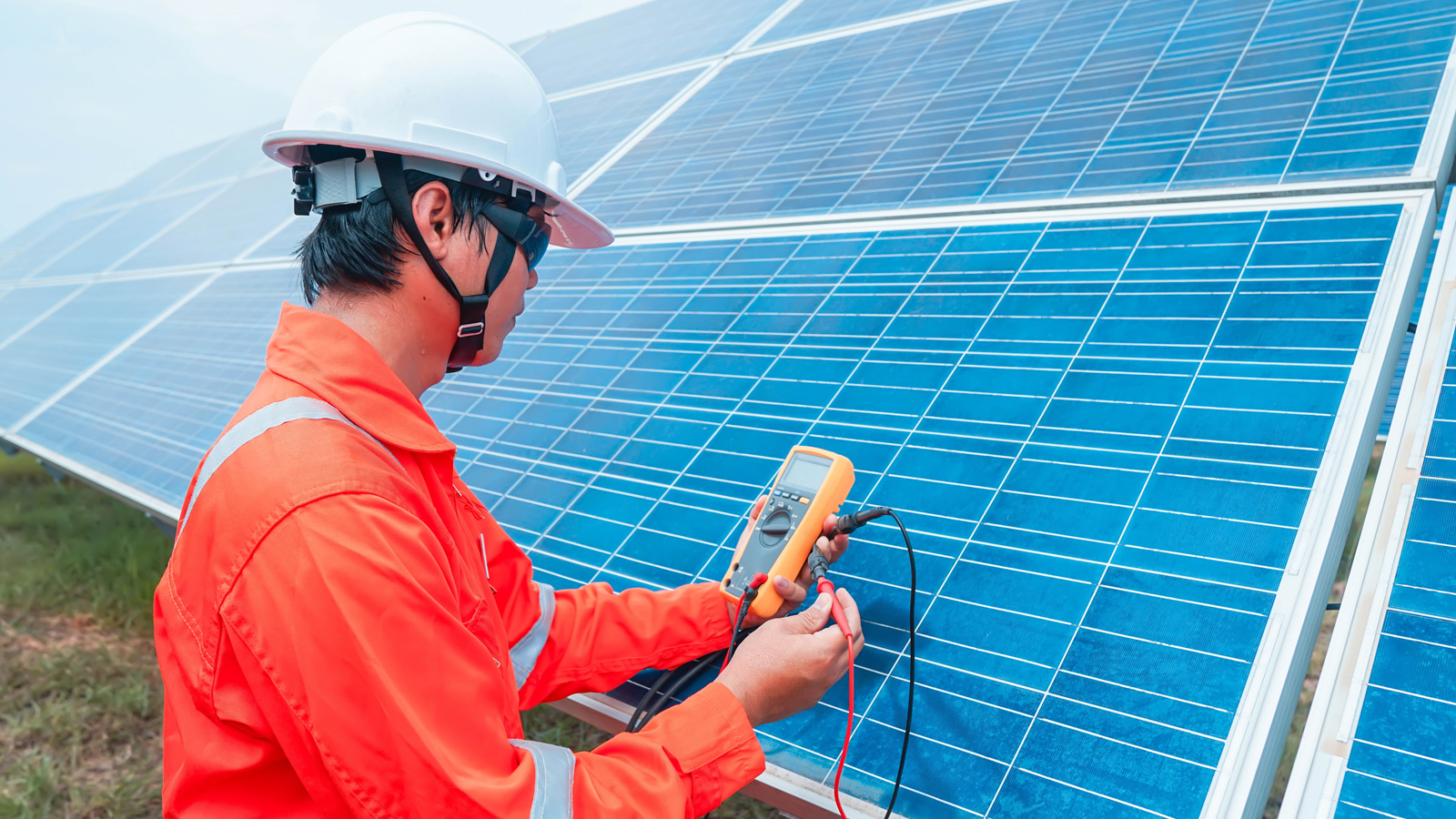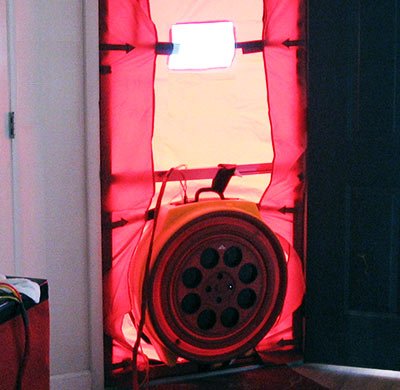Cleaner air starts with energy testing taylors sc
Cleaner air starts with energy testing taylors sc
Blog Article
The Role of Energy Testing in Achieving an Airtight Option for Your Property
Power screening is essential for building owners looking for to create an airtight setting. It identifies air leakages and inadequacies that can jeopardize energy efficiency. Common wrongdoers include voids around doors and windows. Making use of approaches like blower door examinations and thermal imaging, property owners can get understandings into their home's vulnerabilities (energy testing). Recognizing these searchings for is important. What steps should be taken once air leaks are determined? The solutions hold the trick to enhanced comfort and cost savings
Recognizing Energy Testing and Its Relevance
Energy screening plays a vital role in assessing the airtightness of buildings and structures. By measuring air leakage, this approach gives crucial insights into a property's energy efficiency, thermal convenience, and total performance. Airtight structures reduce energy intake, guaranteeing that heating and cooling systems operate efficiently. This testing procedure commonly includes methods such as blower door examinations, which develop a regulated environment to recognize unintentional air pathways.Understanding the significance of energy screening expands beyond compliance with building regulations; it promotes a positive technique to sustainability. Recognizing air leakages early can result in prompt removal, inevitably boosting interior air high quality and lowering energy costs. Additionally, power testing adds to the longevity of building materials by minimizing moisture accumulation and related damage. As recognition of ecological effect increases, power screening becomes an essential tool for homeowners and contractors intending for high-performance residential or commercial properties.
Common Resources of Air Leaks in Residence
Identifying typical resources of air leaks is important for enhancing a residential property's energy effectiveness. These leaks commonly occur in various areas of a building, considerably influencing cooling and heating prices. Typical culprits include voids around doors and windows, where seals may wear away in time. In addition, electric outlets and buttons can create pathways for air exchange otherwise appropriately insulated. Basements and attic rooms are also frequent resources, specifically where walls fulfill the roof covering or the foundation. Various other potential leak factors consist of plumbing infiltrations, venting systems, and the locations bordering chimneys. Older residential or commercial properties might suffer from broken down structure materials, boosting susceptability to air seepage. By recognizing these common sources, homeowner can take aggressive actions to seal leakages, thereby improving total power performance and comfort within their spaces. Addressing these concerns is an important part of establishing an airtight remedy for any type of building.
Approaches of Power Screening: Blower Door and Thermal Imaging
Efficient energy testing methods, such as blower door examinations and thermal imaging, play a crucial duty in diagnosing air leakages within a building. The blower door test includes pressurizing or depressurizing a structure to measure air movement and determine leaks. A calibrated fan is mounted in an outside entrance, and the resulting stress difference highlights areas of unwanted air infiltration. This approach measures the total airtightness of the structure.Thermal imaging matches blower door examinations by aesthetically detecting temperature level variants on surfaces, disclosing surprise air leakages. Infrared electronic cameras record warm loss or gain, permitting specific identification of issue locations, such as improperly insulated wall surfaces or voids around home windows and doors. energy testing north carolina. Together, these approaches supply a comprehensive assessment of a home's power effectiveness, allowing homeowner to deal with air leakages effectively and boost general performance
Benefits of Identifying Air Leaks
Recognizing air leakages provides substantial benefits for energy effectiveness and indoor convenience. By securing these leaks, buildings can reduce power consumption, causing reduced utility expenses and a reduced carbon footprint. In addition, enhanced airtightness contributes to an extra secure interior environment, enhancing general convenience for residents.
Power Effectiveness Improvements
Discovering air leakages is essential for boosting power effectiveness in buildings. Identifying these leaks enables homeowner to deal with locations where conditioned air escapes or unconditioned air goes into, causing considerable power financial savings. By sealing gaps and splits, buildings can keep a regular temperature level, lowering the need on heating and cooling systems. This not only decreases power bills however likewise reduces the environmental impact connected with increased power intake. In addition, power efficiency enhancements add to a building's total sustainability, making it an extra attractive option for eco-conscious customers or lessees. Inevitably, prioritizing air leak detection and removal assists enhance energy use, advertises responsible source administration, and sustains long-lasting monetary advantages for building owners.

Improved Indoor Convenience
Dealing with air leakages not just results in power financial savings yet likewise substantially enhances indoor comfort. When air leakages are effectively determined and sealed, temperature guideline within a residential property comes to be more efficient. This results in consistent indoor temperatures, getting rid of chilly drafts in wintertime and locations in summer. Improved insulation likewise minimizes sound air pollution from outside, developing a quieter and even more relaxed living setting. Additionally, improved air quality is achieved by minimizing the seepage of outdoor contaminants, irritants, and moisture, contributing to the total health of passengers. Property owners experience a more positive ambience, promoting relaxation and performance. Eventually, fixing and acknowledging air leaks is essential for achieving suitable indoor convenience throughout the year.
Just How Energy Screening Enhances Comfort and Indoor Air Top Quality
Energy screening plays a crucial role in improving temperature guideline within interior spaces, guaranteeing a regular and comfy atmosphere. By identifying and securing air leaks, it additionally considerably decreases the seepage of toxins, consequently improving indoor air top quality. This dual influence promotes total well-being for passengers.
Enhanced Temperature Level Policy
Reliable temperature policy substantially contributes to both comfort and interior air high quality, making it an important focus for modern-day building style. Power screening plays an essential role in accomplishing this guideline by identifying areas where warm loss or gain occurs, enabling targeted renovations. By ensuring an airtight building envelope, power screening helps maintain consistent indoor temperature levels, lowering the need for excessive heating or air conditioning. This stability enhances resident comfort, as changes in temperature level can bring about pain and discontentment. Additionally, efficient temperature level control can enhance interior air high quality by lowering the risk of condensation and mold development, which grow in irregular temperature level problems. Energy screening is essential for optimizing temperature administration in domestic and business residential properties. Business Lowered Contaminant Infiltration
While numerous elements contribute to interior air high quality, reduced contaminant seepage stands apart as an important aspect that power testing can substantially boost. Energy testing recognizes air leaks and weak factors in a structure's envelope, which may permit outside pollutants, allergens, and moisture to get in indoor rooms. By sealing these leaks, residential properties can efficiently restrict airborne impurities, resulting in a much healthier environment. Improved airtightness not just enhances convenience but likewise reduces the burden on heating and cooling down systems, resulting in energy financial savings. Furthermore, reduced contaminant seepage fosters much better overall wellness for occupants, as cleaner air promotes respiratory system health and lowers allergic reaction signs and symptoms. Energy screening plays a critical function in developing both an energy-efficient and health-conscious living space.
The Financial Impact of Energy Screening on Energy Bills

Steps to Take After Energy Testing Outcomes
As soon as power screening results are in, home owners need to carefully review the findings to identify the most efficient path ahead. The very first action entails determining the locations that call for improvement, such as air leaks or insulation deficiencies. Home owners ought to after that prioritize repairs based on the severity of the issues and their prospective effect on power efficiency.Next, it is recommended to seek advice from professionals that concentrate on power effectiveness to devise a detailed activity plan. This may include solutions like securing spaces, adding insulation, or updating home windows and doors.After carrying out the essential modifications, a follow-up energy examination can establish the effectiveness of the fixings. Constant monitoring is additionally vital to guarantee that the residential property preserves its airtight standing gradually. By complying with these steps, homeowners can greatly boost their home's power efficiency, causing minimized utility costs and improved comfort.
Frequently Asked Inquiries
Just how Often Should I Conduct Energy Evaluating on My Residential or commercial property?
The regularity of energy testing should typically be every few years, or adhering to significant improvements. Normal assessments assist recognize effectiveness renovations and guarantee that the property preserves excellent energy performance gradually, adapting to transforming conditions.
Is Energy Screening Necessary for New Constructions?
Power testing is crucial for new buildings, as it recognizes potential air leakage and insulation problems - energy testing. Executing these tests assurances power performance, enhances indoor convenience, and satisfies building ordinance, inevitably leading to long-term cost financial savings
Can I Perform Energy Testing Myself?
Energy testing generally requires customized tools and knowledge. While some house owners may try basic assessments, professional services guarantee accurate outcomes and effective recognition of concerns, inevitably bring about far better power efficiency and convenience in living rooms.
What Is the Price of Expert Power Screening Providers?
The price of professional power testing services usually useful reference ranges from $300 to $1,500, depending upon building area, complexity, and size. Property owners ought to consider possible power savings when reviewing the financial investment in these services.
For How Long Do Energy Screening Results Commonly Last?
Power screening results normally remain valid for one to three years, relying on aspects like structure modifications and ecological changes. Routine updates are recommended to assure accuracy and preserve efficient power efficiency requirements. Efficient power testing techniques, such as blower door examinations and thermal imaging, play an essential duty in diagnosing air leakages within a home. Determining these leakages allows building proprietors to attend to locations where conditioned air escapes or unconditioned air goes into, leading to significant energy cost savings. Power screening recognizes air leaks and weak factors in a structure's envelope, which may allow outside toxins, allergens, and moisture to go into indoor spaces. As homeowners significantly look for to reduce their energy expenditures, the role of energy testing ends up being crucial in determining leakages and inefficiencies. Homeowners should then focus on repairs based on the seriousness of the problems and their prospective effect on energy efficiency.Next, it is suggested to consult with specialists that specialize in power performance to create a thorough activity strategy.
Report this page